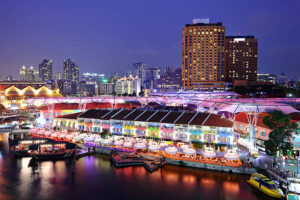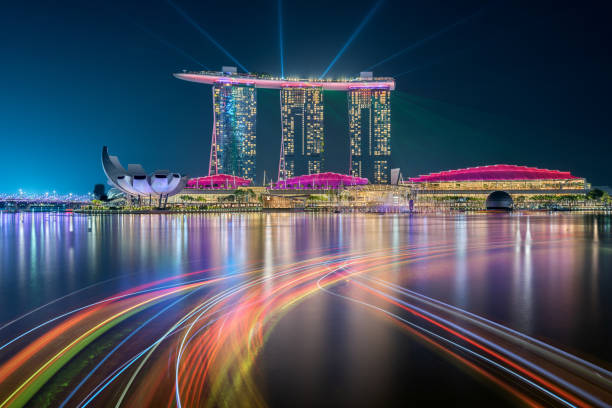Besides the Popular Institutions
When individuals read the term “modern art museum singapore” they tend to think of a few larger-than-life establishments that make it into guidebooks. But all over the island, little museums and galleries lurk in the background, waiting to please. These unhyped destinations do not always have flashy displays or long queues, but they at times help in offering a more rewarding and personalized access to the art. They place a reminder that not everything associated with creativity has to be big and stunning to work. The most common forgotten areas that can work.

Mico Museos Big Voices
Small but Mighty
Most of these are places that can be done in less than one hour. But such concision heightens the experience. You do not run through interminable corridors, but concentrate. An installation may occupy an entire room and will require your complete consideration. Delivery may be on such a very low level that you scarcely notice it until it comes to haunt you hours afterwards.
Chats over Cohorts
Staff members also have time to converse with visitors because the number is small. Some are also providing behind-the-scenes details to the curating process or stories behind some works. This proximity creates a visit that is turned into dialogue so the art is less abstract and more accessible.
The Beauty of the Unconventional Place
Dark Alleyways of the Town
Neglected museums do not stand in shimmering high-rise buildings. They develop houses in old shophouses, warehouses or even an office building. It is like stumbling into a secret when walking on. The environment provides flair; chipped paint, squeaky floors, or improvised lighting in the environment all play a role.
No Road Map
These destinations do not shove tourists on one predetermined path. You could round a corner and walk into an immersive sound sculpture or a projection that is freed over a lumpy wall. The randomness makes one always alert to curb curiosity at every point.
Why They Stand Apart
Focus on Experimentation
Larger facilities tend to be cautious and promote what is known pretty well to them. Smaller museums are on the experimental side. They provide room for new voices and experimentation-based formats–installations assembled using waste material, digital art with heritage motifs, or performances that happen within inches of the viewer. The point is the visitors can never know what to expect.
Constant Renewal
They are light on their feet, and as such underrated museums must update exhibits on a regular basis. A place you were at last month might have a completely different look at present. This fluidity pays off on repeat visits, since there is always something new in rotation.
Alternative Realities Set in Place
Local Perspectives
Most of these museums focus on art that is rooted in the Singapore context, housing estates, hawker culture and changing identities. The experience of familiar life viewed through a new perspective of modern art may generate a feeling of familiarity with the new art form and a sense of surprise. It demonstrates that modern creativity does not wipe out the heritage; it reprocesses it through the new prisms.
Making Old and New Merge
There are other groups of collections that experiment with conventional materials in new ways. A rattan piece of furniture sculpture. An archival video projection overlapped by archival footage. These pairings remind readers that modernity and memory are not mutually exclusive–in many cases they are more effective partners.
In Detail Visitor Experience
Slower Richer Encounters
Contrary to congested institutions where people rush around so fast, underrated museums give one time to stay on. There is no hurrying along. You have time to stand in front of one piece as long as you want to, and the piece does unfold itself.
Very True and Natural
Do not expect shiny pamphlets and edited headset tours. To confront rawness is not an issue in these spaces. The displays are sparse, even perhaps ad hoc, and that candor is inviting. Rather than being spoon-fed meaning, you are invited to make your own.
Difficulties Under the Surface
Financial Struggles
Running a small art museum in Singapore is not an easy task. Rent and cash-restrained resources keep survival a challenge. Others just work on pure willpower and on the power of the community. Attending their shows, purchasing their tickets or even telling people are ways of ensuring that these cultural havens remain throughout the years.
Finding a Balance between Attention and Intimacy
They risk being overwhelmed by visitors, which changes their very intimacy when overhyped. Too little and they will evaporate into the air masses. This is what it means to walk on a tightrope to them.
The Digital Platform’s Role
Amplified Reach
Recently, social networks have created a new lease of life for these museums. A lone impressive photo or a brief video can redefine an offbeat museum into a trending venue. And, all of a sudden, this little-known exhibition spreads its wings over the world.
Word-of-Mouth Power
Yet, there is nothing to compare to a personal recommendation. These lesser-known museums are the ones that survive to some extent on word of mouth. Friends come with friends. Ad hoc visitors come back with the subordinates. Growth is organic, as they are based on genuine excitement as opposed to the heavy marketing.
Why They are Worth Your Time
Substance Over Show
Touring smaller museums of contemporary art puts the emphasis on experience rather than on the spectacular. They do not have giant installations or blockbuster shows, but what they have is intimacy. They make art more like a dialogue than an institution.
Memorable Encounters
All the spaces are compact, and thus the pieces have a much stronger resonance. Rather than walk away with dozens of works in the memory also blurred together, often visitors will remember one or two pieces. The images are clearer, and the effects more enduring.
Looking Ahead
Modern art museums in Singapore are small but underrated and do not have to compete with larger-scale museums as well. They are powerful in closeness, dexterity and genuineness. They demonstrate how a contemporary art museum visit in Singapore can be equally intense in a back-street one as in a large institution.
These under-the-radar finds ensure the city has a rich pulse in the arts, as new voices and risks are taken and connections are tapped with audiences. These are not only the exhibitions they can offer to people willing to go out of the beaten path. They provide such moments that remain with you–quiet, surprising, and memorable.










